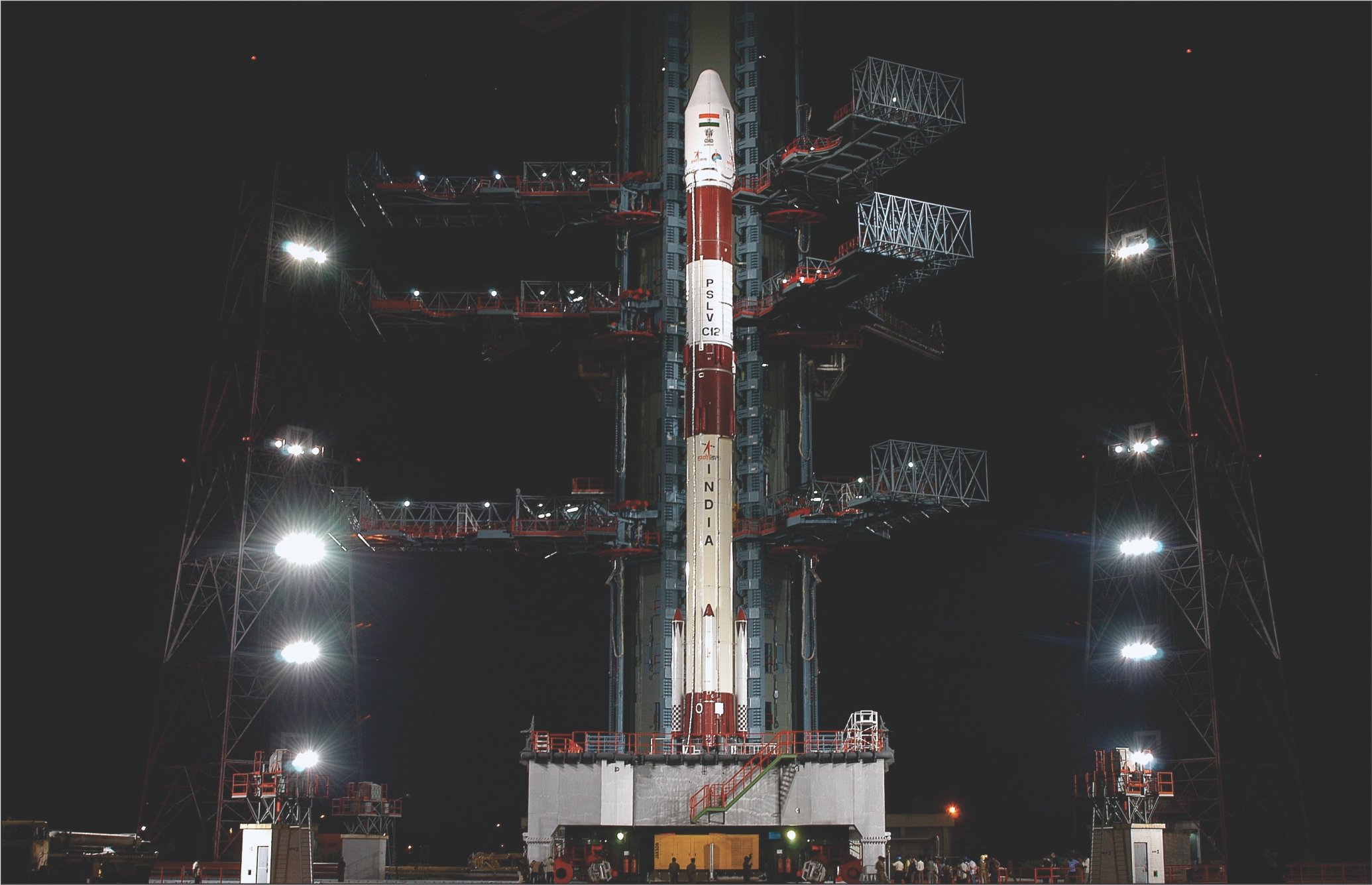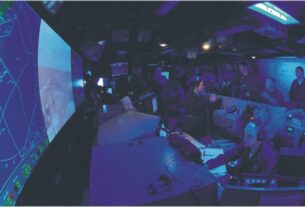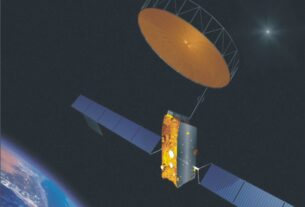India, which began its space journey in a modest manner way back in November 1963 with the launch of a 9-kg sounding rocket from a launch facility in the fishing hamlet of Thumba on the outskirts of Thiruvananathapuram in Kerala, has now attained the capability to hoist a 2-tonne class satellite payload into the geostationary transfer orbit.
Indeed, the successful flight of the three stage Geosynchronous Satellite Launch Vehicle (GSLV) in January featuring a home grown upper cryogenic engine stage has helped break the jinx that had nudged Indian Space Research Organisation( ISRO) to fall back on a solitary launch vehicle Polar Satellite Launch Vehicle (PSLV) operating on non cryogenic fuel for long.
The successful qualification of the cryogenic engine stage encasing complex and difficult to master technological systems has now opened up the possibility for ISRO to build bigger and more powerful launch vehicles without the kind of problems it had encountered during the process engineering an indigenous cryogenic engine stage.
As it is, a cryogenic fuel stage is capable of generating higher thrust in comparison to the conventional solid and liquid fuel driven rocket stages. Having mastered the tricks and nuances of building and deploying a cryogenic fuel driven rocket stage, ISRO has successfully overcome the technological barriers in so far as boosting the launch capability of the country in a phased manner is concerned.
Major success
In a major boost to the Indian launch vehicle development program, the Indian Government has approved an additional funding of Rs 29,000-million for the development and qualification of high performance GSLV-MKIII which seeks to build up a launch capability to place a 4-tonne class satellite payload into a geostationary transfer orbit.
The successful launch of GSLV has given a big thrust to the GSLV-MKIII development program. The experimental flight of the 630-tonne, three stage GSLV-MKIII is planned to take place in May this year. Significantly, this experimental flight will carry a prototype of the crew module developed for the proposed Indian manned space flight to check how it functions during the re-entry phase.
Of course, this experimental flight will not carry an operational upper cryogenic engine stage. It will only have a passive cryogenic engine which will not be ignited in the flight. This experimental flight will be followed by two developmental flights with fully functional upper cryogenic engine stage. The GSLV-MKIII developmental flights are scheduled for 2016-17 and 2017-18.
The GSLV-MKIII features two identical large solid straps on boosters with 200-tonne of solid propellant strapped on either side of the core stage with 110-tonneof liquid propellant loading. The upper stage is the cryogenic engine stage with 27-tonne of propellant loading.
Meanwhile, ISRO says that it has covered much ground in the development of a semi cryogenic engine capable of generating 2000-kN thrust. The semi cryogenic engine uses a combination of Liquid Oxygen (LO) and ISROSENE which are eco friendly and cost effective. A number of tests to qualify various systems and sub-systems of semi cryogenic engine stage have been carried out. As envisaged now, the semi cryogenic engine is expected to be ready by 2017. This engine, based on the staged combustion cycle, would be capable of generating a thrust of 2000-kN. According to ISRO, by replacing the core stages of the existing launch vehicles with the semi cryogenic engine stage, it would be possible to boost the payload carrying capacity of a launch vehicle by a substantial extent. In particular, the semi cryogenic engine stage will be used to boost the lift off capability of future heavy lift and unified launch vehicle (ULV) as well as re-usable space vehicles.
In a major breakthrough for the Indian Space Program, flawless January 5th flight of the 414.75-tonne GSLV, whose cryogenic engine upper stage symbolises two decades of painstaking efforts by the ISRO, placed the 1982-kg GSAT-14 communications satellite into a highly accurate orbit. This spectacular success following earlier abortive efforts has come as a shot in the arm for the Indian space agency.
Propulsion system
The importance and significance of the GSLV’s success lies in the fact that cryogenic propulsion system is today a very much guarded technology that only five other countries-USA, Russia, China, Japan and European Space Agency (ESA)-have developed so far.
The Rs 3600-million GSLV mission, while laying a solid foundation for the Indian space agency to build bigger and better launch vehicles, has conferred on India the distinction of being the sixth member of the elite global space league.
GSLV will be used for launching India’s second lunar probe Chandrayaan-II, a robotic landing mission as well as the follow on missions to Mangalyaan Mars spacecraft launched in last November.
Verily, the successful performance of the home grown cryogenic propulsion system has all the potentials to accelerate the process of development and qualification of the high performance GSLV-MKIII which is planned to be pressed into service for India’s proposed manned flight which is yet to receive final nod from the Government of India.
As things stand now, a fully operational GSLV would confer on India an independent capability to launch INSAT/GSAT satellites which are in 2-2.5-tonne class. The strategic significance of an operational GSLV lies in the fact that it would make for a huge saving of precious foreign exchange shelled down for procuring the commercial launch service for getting INSAT/GSAT class satellites off the ground.
As pointed out by ISRO sources, India had paid something like US$85-90 million as a fee for launching a communications satellite weighing 3.5-tonne. Against such a scenario, a GSLV mission costs just around Rs 2200-million. The cost of GSAT-14 satellite orbited by GSLV was around Rs1400-million. By all means, India can now confidentially move ahead with the proposal to offer the services of GSLV-like its predecessor four stage Polar Satellite Launch vehicle (PSLV)-on commercial terms for launching the heavier class satellites for other countries.
After a couple of developmental flights, the services of GSLV can be offered on commercial terms. Clearly and apparently, this development would reverse the earlier dependence on procured launcher against heavy payment, by bringing in the foreign exchange into the Indian kitty.
The development and successful flight of GSLV with the home grown technological systems marks a quantum leap for ISRO. The breakthrough reflected in the successful GSLV flight has brought to the country a range of long term, immense and diverse benefits spanning strategic, commercial, and industrial and space exploration sectors.
Strategic significance
On another front, an independent satellite launch capability makes for a sound strategic sense in that it could insulate the country from the uncertainties that the multi billion dollar global space market could face in the future due to shifting political and geo strategic environment.
As it is, for long ISRO was the target of the notorious US trade sanction. Because of the complex technological challenges involved in the development of a cryogenic engine in late 1980s, ISRO took the decision to acquire the cryogenic engine technology from Russia with the purpose of giving quickening impetus to the development of GSLV, the first two stages of which are derived from the modules of PSLV.
Accordingly, in 1991, ISRO entered into an agreement with the Russian federal space agency Glavkosmos for the supply of two flight ready cryogenic engine stages along with the transfer of critical cryogenic engine technology to ISRO. Significantly, the Russian cryogenic engine was a modified version of a propulsion system developed for the Soviet era N-1 rocket. But then in 1992, USA citing the provisions of the so called Missile Technology Control Regime (MTCR), pressurised Russia which was just suffering the pangs of disintegration, to abandon its commitment of transferring the cryogenic engine technology to India.
The argument of USA was that cryogenic engine technology has dual use potentials. But the ground reality is that cryogenic propulsion technology is not well suited for a missile system for the simple reason that the cryogenic fuel cannot be loaded on into the missile in advance.
Under US coercion, Russia diluted the original agreement, as a face saving device, to facilitate the supply of seven ready to use cryogenic engine stages without any technology transfer. This was to enable India carry out GSLV flights till such time as an indigenous cryogenic stage gets ready. Following the denial of the cryogenic technology, ISRO launched its Cryogenic Upper Stage Project (CUSP) about two decades back. The mission objective was to realize a three stage launch vehicle capable of placing a 2-2.5-tonne satellite into a geostationary transfer orbit. Evidently, the successful GSLV flight is a slap on the face of US technology denial regime.
Evidently, a cryogenic engine stage is highly efficient since it generates more thrust for every kg of fuel it burns in comparison to solid and earth storable liquid fuel driven rocket stages. But then a cryogenic stage is technically a very complex system in comparison to solid or earth storable liquid propellant stage due to its use of propellants at a very low temperatures and associated thermal and structural problems.
Oxygen liquefies at-183 degree C and the hydrogen at -253 C. The propellants at these low temperatures are to be propelled using turbo pumps running at around 40,000-rpm (rotations per minutes). It also involves a complex ground support system like propellant storage and filling systems, cryo engines and stage test facilities, transportation and handling of cryo fluids and related storage facilities. For GSLV development and testing, ISRO had set up extensive and sophisticated facilities.
Future development
By no means is ISRO resting on its laurels. Going beyond the GSLV success, ISRO is now stepping up its focus on the development of an advanced air breathing propulsion system in tandem with reusable space vehicle technology which holds the key to the highly affordable routine access to space in the low earth orbit. In contrast to the conventional space launch systems based on the burning of costly propellants with the help of on-board oxidiser, an air breathing propulsion system sucks in the atmospheric oxygen for combustion. This results in substantial improvement in payload carrying capabilities along with an overall reduction in cost.
ISRO has taken up a systematic research and development program to demonstrate stable supersonic combustion through a series of ground tests on the air breathing propulsion technology and flight demonstration is planned with the Advanced Technology Vehicle (ATV).
The Thiruvananthapuram based Vikram Sarabhai Space Centre (VSSC), the largest Indian space establishment, is the lead agency for developing a scramjet system meant to power the reusable space vehicle. Since air breathing propulsion system has the capability to operate only during the atmospheric phase of the flight, it always needs to be adopted along with the conventional rocket booster stage for meeting the final orbital requirements.
According to ISRO sources the development of scramjet (supersonic combustion ramjet) system involves a number of new and novel technologies including the mixing of the very high speed air, achieving stable ignition and flame holding in addition to enabling combustion within the practical length of the combustor.
Dr APJAbdul Kalam, the former Indian President and well known space and missile scientist, has strongly advocated the need for India to go in for reusable space vehicle. Incidentally, while working for ISRO, Dr Kalam had laid the foundation of India’s civilian space vehicle development program.
ISRO has already carried out the design, development and characteristic realization of a scramjet system with a fairly good degree of success. Sources in ISRO point out that an air-breathing propulsion system based on scramjet will pave the way for an “easy, efficient and routine” access to space through a reusable space vehicle.
ISRO says that the scramjet technology is in a very nascent stage of development. And as part of its long term plan of realizing a scramjet powered space flights, ISRO has configured a winged Reusable Launch Vehicle Technology Demonstrator (RLV-TD). Clearly and apparently, the RLV-TD would serve as a test bed to evaluate some of the critical technologies including hypersonic flight, autonomous landing, powered cruise flight and air breathing propulsion system towards realizing a Two Stage to Orbit (TSTO) fully reusable space vehicle.
Major accomplishments of ISRO in developing the key technological elements of a reusable space system include mission analysis based on static test propulsion performance, updating of auto pilot design in RLV-TD ascent phase and Technology Demonstrator Vehicle (TDV) descent phase, 6D simulation through COMETS and SITARA to validate navigation and guidance control design, lift off studies and wind turbulence studies.
Scramjet engine fabrication with super alloy Inconel 718 and aluminium alloy AA2014 involving complex geometry is in advanced stage. Vacuum brazing of critical air heater module with intricate milled cooling channels were carried out for the scramjet ground testing facility.
The feasibility studies on scramjet propulsion for space transportation and missile systems have been in vogue since late 1950s. The most conspicuous advantage of scramjet system is that it helps in the seamless integration of air and space operations.
Meanwhile, ISRO is preparing for the commercial flight of India’s four stage Indian space workhorse PSLV (Polar Satellite Launch Vehicle) slated for May 2014.This PSLV mission will launch the French earth observation satellite Spot-7 in addition to delivering into orbit four other smaller satellites as piggy back payloads. As it is, in Sep 2012 as part of a contract bagged by Antrix Corp, the commercial arm of the Indian space programme, a PSLV mission had successfully put into orbit the 712-kg Spot-6 satellite that was similar in configuration to Spot-7. This PSLV mission also delivered into orbit a 15-kg Japanese nano probe named Protieres as a piggy back payload.
On another front, Bangalore based Antrix Corp, has entered into launch services agreement with DMC International Imaging (DMCII), the wholly owned subsidiary of Surrey Satellite Technology Ltd of UK, for the launch of its three DMC-3 earth observation satellites at the head of PSLV. Antrix has also signed launch services agreement with ST Electronics (Satcoms and Sensor Systems) Pte Ltd of Singapore for launching its TeLEOS-1 remote sensing satellite by means of a PSLV flight. Antrix sources said that these launches are planned to take place during 2014-15 timeframe.
Yet another PSLV commercial mission envisaged for the second half of this decade would orbit EnMap, the German hyper spectral environmental mapping. With a lift off weight of 870 kg, EnMap would be the heaviest payload to be launched by PSLV under a commercial contract.
Incidentally, PSLV, which for long was the only operational space vehicle at the command of ISRO, created a sort of history by successfully launching India’s first ever probe to Mars, Mangalyaan. It was an augmented version of PSLV which did the job of orbiting Mangalyaan. A similar variant of PSLV was pressed into service for launching India’s first ever lunar spacecraft Chandrayaan-1 in 2008.
As it is, the PSLV propelled by alternative liquid and solid fuel driven stages has proved its multi payload and multi mission capability in a single launch. PSLV has so for launched 35 satellites of international customers.
Significantly, the first two stages of GSLV are derived from the flight proven modules of PSLV which was originally designed and developed by ISRO to serve as a workhorse for launching one tonne class earth observation spacecraft into a polar/sun-synchronous orbit.





